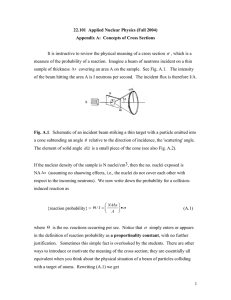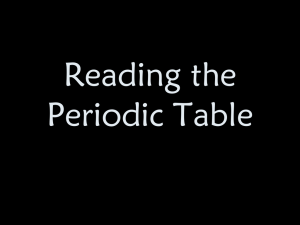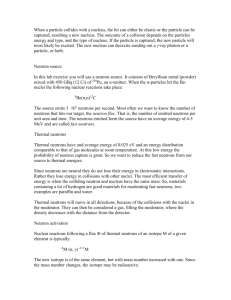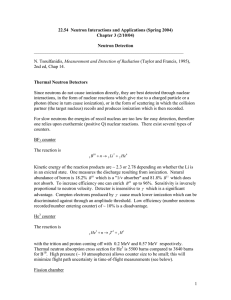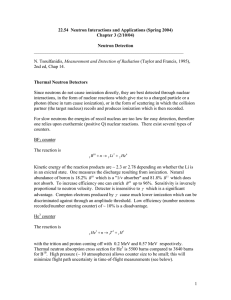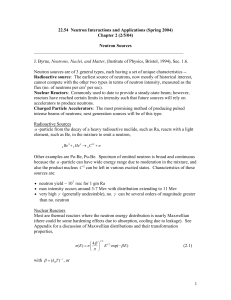22.54 Lec 1 Why Are Neutrons Special?
advertisement
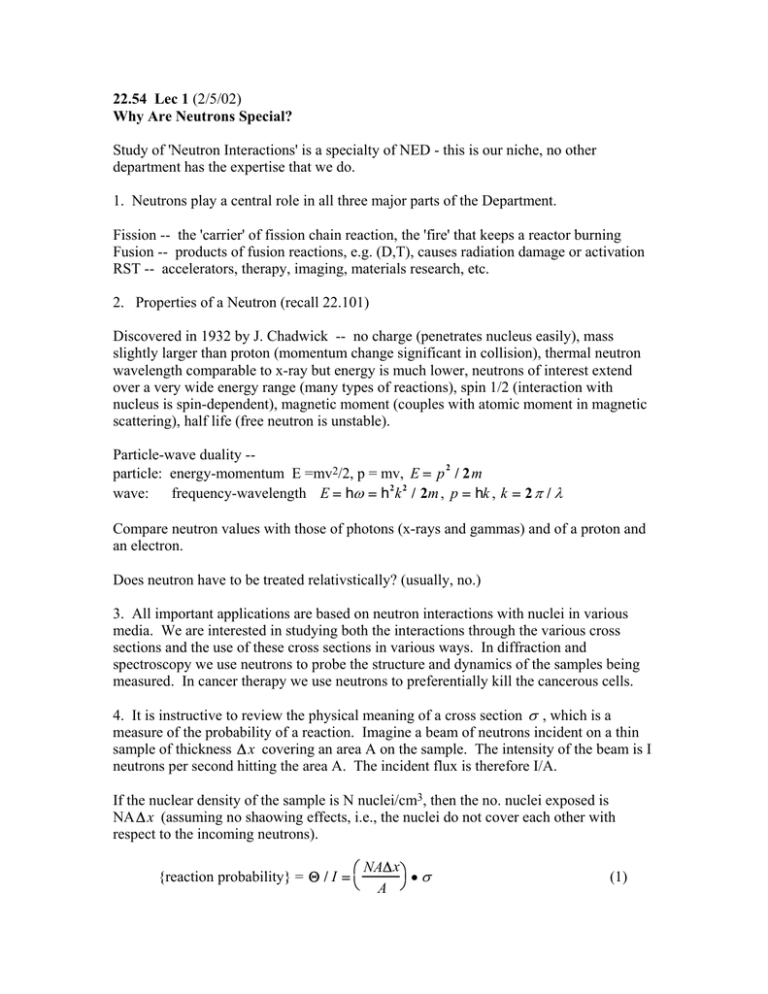
22.54 Lec 1 (2/5/02)
Why Are Neutrons Special?
Study of 'Neutron Interactions' is a specialty of NED - this is our niche, no other
department has the expertise that we do.
1. Neutrons play a central role in all three major parts of the Department.
Fission -- the 'carrier' of fission chain reaction, the 'fire' that keeps a reactor burning
Fusion -- products of fusion reactions, e.g. (D,T), causes radiation damage or activation
RST -- accelerators, therapy, imaging, materials research, etc.
2. Properties of a Neutron (recall 22.101)
Discovered in 1932 by J. Chadwick -- no charge (penetrates nucleus easily), mass
slightly larger than proton (momentum change significant in collision), thermal neutron
wavelength comparable to x-ray but energy is much lower, neutrons of interest extend
over a very wide energy range (many types of reactions), spin 1/2 (interaction with
nucleus is spin-dependent), magnetic moment (couples with atomic moment in magnetic
scattering), half life (free neutron is unstable).
Particle-wave duality -particle: energy-momentum E =mv2/2, p = mv, E = p 2 / 2m
wave:
frequency-wavelength E = hω = h 2 k 2 / 2m , p = hk , k = 2 π / λ
Compare neutron values with those of photons (x-rays and gammas) and of a proton and
an electron.
Does neutron have to be treated relativstically? (usually, no.)
3. All important applications are based on neutron interactions with nuclei in various
media. We are interested in studying both the interactions through the various cross
sections and the use of these cross sections in various ways. In diffraction and
spectroscopy we use neutrons to probe the structure and dynamics of the samples being
measured. In cancer therapy we use neutrons to preferentially kill the cancerous cells.
4. It is instructive to review the physical meaning of a cross section σ , which is a
measure of the probability of a reaction. Imagine a beam of neutrons incident on a thin
sample of thickness ∆ x covering an area A on the sample. The intensity of the beam is I
neutrons per second hitting the area A. The incident flux is therefore I/A.
If the nuclear density of the sample is N nuclei/cm3, then the no. nuclei exposed is
NA∆ x (assuming no shaowing effects, i.e., the nuclei do not cover each other with
respect to the incoming neutrons).
NA∆x
{reaction probability} = Θ / I =
•σ
A
(1)
where Θ is the no. reactions occurring per sec. Notice that σ enters the definition of
reaction probability as a proportinality constant. Rewriting (1) we get
σ = {reaction probability} / {no. exposed per unit area}
=
1 Θ
Θ
=
IN∆x I N∆x ∆x →0
(2)
Moreover, we define Σ = Nσ , which is called the macroscopic cross section. Then (2)
becomes
Σ∆x =
Θ
,
I
or
Σ ≡ {probability per unit path for small path that a reaction will occur}
(3)
Both the microscopic cross section σ and its counterpart Σ are fundamental to our
study of neutron interactions. Notice that this discussion can be applied to any radiation
or particle, there is nothing that is specific to neutrons.
5. We can readily extend the discussion to an angular differential cross section
dσ / dΩ . Now we imagine counting the reactions per second in an angular cone
subtended at angle θ with respect to the direction of incidence (incoming particles). Let
dΩ be the element of solid angle. We can write
1 dΘ
dσ
=
N∆x
dΩ
I dΩ
(4)
Notice that again dσ / dΩ appears as a proportionality constant between the reaction rate
per unit solid angle and a product of two simple factors specifying the interacting system
- the incient flux and the no, nuclei exposed (or the no, nuclei available for reaction).
Note the condition
dσ
∫ dΩ dΩ = σ , which makes it clear why dσ / dΩ is called the
angular differential c.x.
Another extension is to consider the incoming particles to have energy E and the particles
after reaction to have energy in dE' about E'. One can define in a similar way as above an
energy differential c.x., dσ / dE ' , which is a measure of the probability of an incoming
with incoming energy E will have as a result of the reaction outgoing energy E'.
6. Combining the two extensions we can arrive at a double differential cross section
2
d σ / dΩ dE' , which is a quantity that has been studied quite extensively in thermal
neutron scattering. This quantity involves the most fundamental information about the
structure and dynamics of the scattering sample.
7. In 22.54 we will be concerned with all three types of cross sections, σ , the two
differential c.x., and the double differential c.x., for neutrons.

